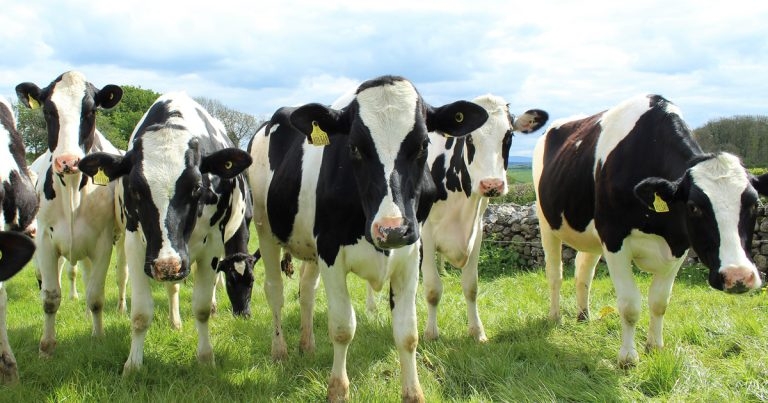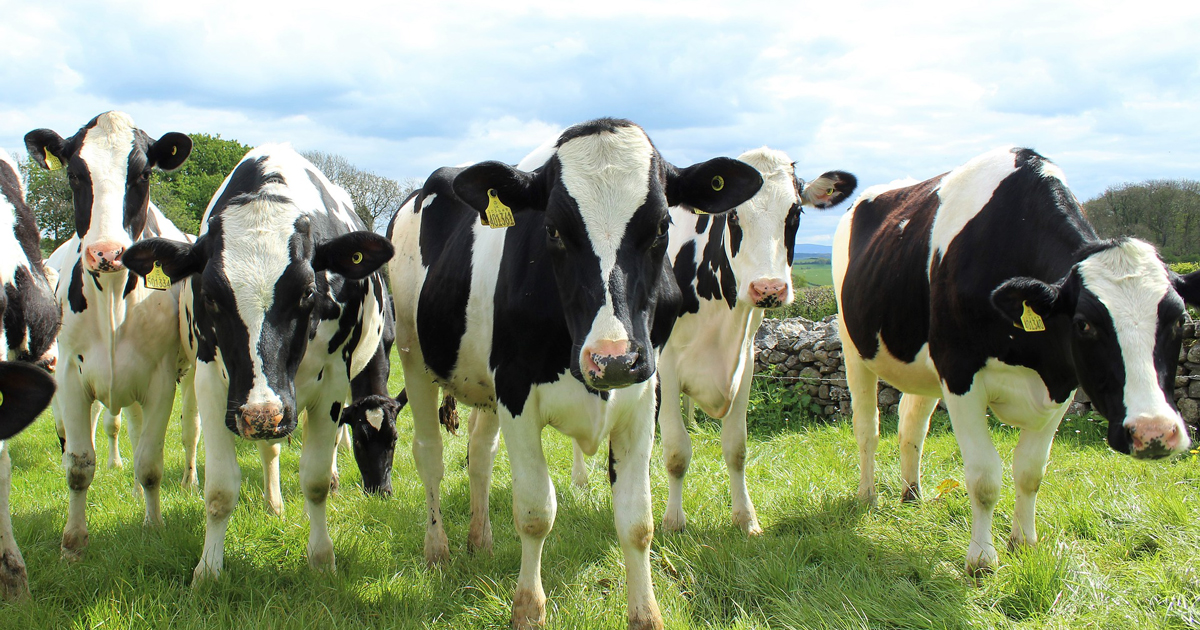5 May 2020
Jenny Allan describes the presentation of this seasonal condition in cattle, as well as strategies for treating and preventing it.


Summer mastitis is an acute disease of the non-lactating mammary gland. It most commonly occurs in outside-kept dry cows, pregnant heifers and, occasionally, beef cows, with reduced milk yield later in the summer.
A regional variation exists in the UK1 – with more cases seen in south-west dairy areas and areas with greensand soils, as the open structure and free-draining nature makes it particularly suitable for soil-dwelling insect larvae2 involved in disease transmission.
Overall incidence of cases is fairly constant, but with farm variation dependent on location and weather3.
Infections are thought to be mixed, with aerobic and anaerobic bacteria working synergistically to cause infection4. The predominant bacteria involved tend to be Arcanobacterium pyogenes (now Trueperella pyogenes5), Streptococcus dysgalactiae and Fusobacterium necrophorum.
The transmission of summer mastitis predominantly involves Hydrotaea irritans, the biting fly. The flies bite the teats of the udder and transfer bacteria from their legs to the teat6,7. Animals can have more than one quarter infected – and even if the original infection was via an external route, haematogenous spread is possible to adjacent quarters8.
When cases are identified, it is important these infected animals are separated, as bacteria in secretions shed from the infected quarters can infect other animals in a group.
The affected quarter becomes swollen, hot and distended. Milk secretions from the affected quarter are thick, pus-like and clotted, causing increased fly attraction to the secretions, with swarms seen around the affected teat.
The quarter will be filled with pus and necrotic tissue, with the majority of teats being permanently damaged and lost to milk production.
Time of detection to time of treatment is a large factor in the survival of the infected teat9, once infected treatment is focused on salvage of the infected quarter.
In less severe cases, signs may go unnoticed in non-pregnant animals and maiden heifers, only being identified as blind quarters when they calve into the herd3.
If the disease progresses, cows will become systemically ill, pyrexic, stiff and anorexic. Oedema can also show in the hindlegs, hock and fetlock joints, and around the udder.
Systemic illness is caused by subsequent toxaemia and can induce abortion or birth of weak calves1,2.
Parenteral antibiotics are needed as the quarter will be difficult to penetrate with intramammary tubes due to pus and necrotic tissue being present.
Gram-positive and anaerobic bacteria need to be targeted, so penicillin-based antibiotics are typically used – for example, amoxicillin or amoxicillin clavulanate10,11. Resistance has been documented against tetracyclines and erythromycins12.
Other treatment will include NSAIDs to help with pain, inflammation and pyrexia, with cows needing two to three days of NSAIDs.
If the cow is systemically unwell and dehydrated, then fluid therapy is needed. Depending on dehydration status, IV administration of hypertonic fluids, followed by an oral bolus, may be indicated.
Intramammary treatment is not indicated due to the pus-filled quarter reducing the antibiotic’s effectiveness.
Frequent stripping of the infected quarter is very important, but often difficult, in painful udders and beef animals. When stripping out infected quarters, the milk secretions need to be collected into a bucket and disposed of away from other animals, as secretions can be infectious. The infected animal should also be isolated from the group.
In extreme cases, it is necessary to split the teat lengthways to drain the udder of pus or remove the teat completely. This is a salvage procedure and has complications, including haemorrhage.
Due to the causative bacteria being predominantly transferred via H irritans flies, fly control has been the key component to control strategies. Options include insecticides – including the synthetic pyrethroids in either pour-on or ear tag applications – or insect repellents, including Stockholm tar.
Historically, the insecticidal options have been used to varying successes3,13,14. Ear tags impregnated with cypermethrin are available15, with one study demonstrating an 89% reduction of H irritans on cows treated with two ear tags16.
Pour-ons are applied to the animal’s back, with one study14 demonstrating a significant reduction in flies on treated animals with a deltamethrin pour-on preparation17.
However, more recently the form of application is less important, as one study suggested no difference in fly control between fly tags or pour-on preparations18.
The principle of fly control using insecticides is to reduce the fly population. Flies have to land on the animal and come into contact with the product to be killed19. Once populations have built up, it is hard to reduce them. Therefore, early administration in the season to animals in high-risk fields is key.
The level of environmental challenge is also important – if fly levels are high then the products can be overwhelmed20.
Alternative prevention would be to avoid grazing dry cows or heifers in high-risk pastures – including pasture heavily surrounded by woodland or hedgerows21 near to rivers and in close proximity to farm yards with muck heaps or slurry lagoons.
In more recent years, the danger of pesticide use on environmental contamination has caused increased focus on a move towards natural predators of fly. The natural predators of H irritans larvae include chickens, tree swallows or certain types of parasitic wasps22. Dung beetles also bury cow faeces underground, stopping the larvae hatching23,24.
With the recent call for less pesticide usage in agriculture systems, the use of biological control methods may be seen more over the coming years.
Historically, dry cow therapy was seen to be important in reducing cases, up until six weeks post-infusion, so repeated infusions were given25.
More recently, teat sealant has provided longer, more robust, teat canal protection. Teat condition also needs to be maintained to reduce risk of external infections8,26 through wounds.
Teat sealant for maiden heifers has also proved useful, internally27 or externally. If administration of intramammary tubes is difficult, external sealants can be used; however, many are only described to last seven days and issues have been documented with short adherence times28,29.
With either internal or external teat sealants, hygiene at application is essential.
Stockholm tar is derived from pine wood distillation. This has been used in human medicine for its anti-inflammatory and antimicrobial properties30, and can be painted on udders.
It has been reported anecdotally to deter flies by farmers; however, scientific evidence is limited. It is a time‑consuming and labour‑intensive task, and reapplication is needed frequently.
Due to the devastating and irreversible effects of the disease, prevention or reduction to fly exposure is critical.
The increased use of more natural biological control techniques for fly control – and the use of non-antibiotic teat protection – may have a more prominent place in our future pest control methods.